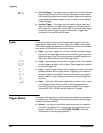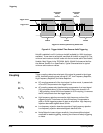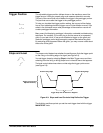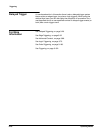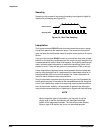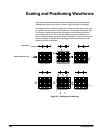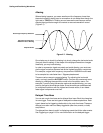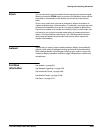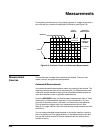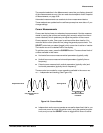
Acquisition
Operating Basics
2Ć20
Sampling
Sampling is the process of converting the analog input signal to digital for
display and processing (see Figure 2Ć5).
Sampling Rate
Record Points
Figure 2Ć5:ăRealĆTime Sampling
Interpolation
Turning the horizontal SCALE knob clockwise causes the scope to assign
shorter time periods to the waveform record. The smaller the time period
gets, the faster the oscilloscope needs to acquire record points to fill up the
record.
If you turn the horizontal SCALE knob to a point that the time base is faster
than 25Ăns, the digitizing oscilloscope will not acquire enough samples for a
complete waveform record. When that happens, the digitizing oscilloscope
uses a process called interpolation to create the intervening points in the
waveform record. There are two options for interpolation: linear or sin(x)/x.
Linear interpolation computes record points between actual acquired samĆ
ples by using a straight line fit. It assumes all the interpolated points fall in
their appropriate point in time on that straight line. Linear interpolation is
useful for many waveforms such as pulse trains.
Sin(x)/x interpolation computes record points using a curve fit between the
actual values acquired. It assumes all the interpolated points fall along that
curve. That is particularly useful when acquiring more rounded waveforms
such as sine waves. Actually, it is appropriate for general use, although it
may introduce some overshoot or undershoot in signals with fast rise times.
NOTE
When using either type of interpolation, you may wish to set the
display style so that the real samples are displayed intensified
relative to the interpolated samples. The instructions under Display
Style on page 3Ć26 explain how to turn on intensified samples.





